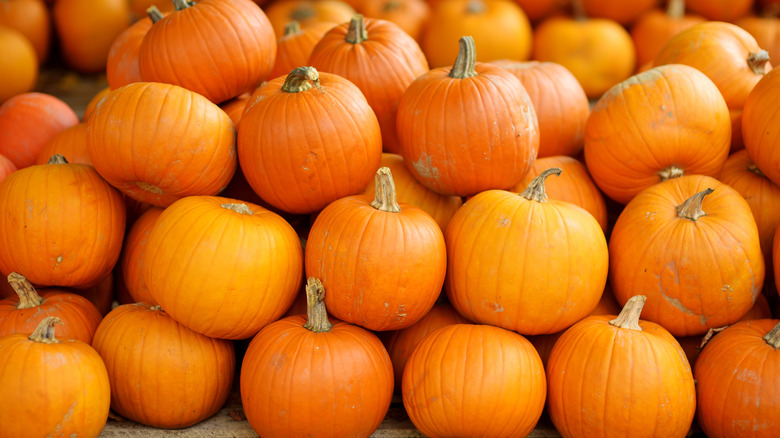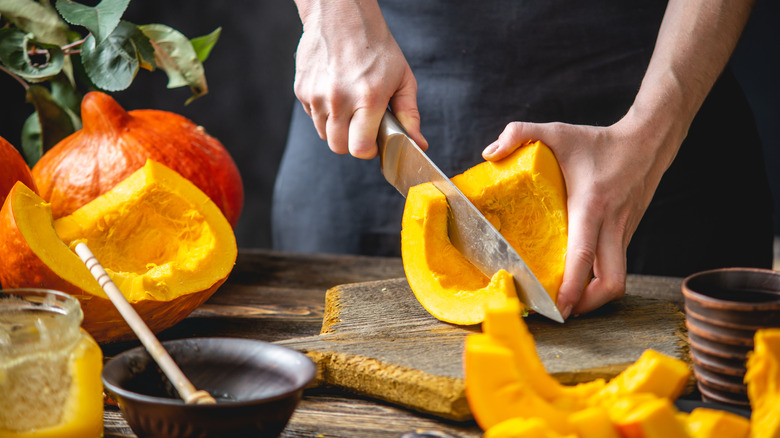Pumpkins This Size Are Easiest To Cook With
There's a lot of thought that goes into picking just the right kind of pumpkin to carve into a jack-o-lantern that will look scarier than anyone else's on your street. When walking through a pumpkin patch, you want to go for the perfect-looking gourd, free of any black spots and squishy bits that will get in the way of carving it. And you also want your pick to be flat-bottomed, sturdy, and mature enough to give a hollow sound when you tap it, says Bellevue, Washington's Patch affiliate.
However, if the pumpkin you're looking for will be used to make sweet and spiced pumpkin pies, soups, casseroles, and other autumnal bakes, it's a completely different ball game. There are a variety of different pumpkins that you can choose from, and each type is best suited for a different kind of cooking. While the big round kind you see at pumpkin patches are certainly excellent for carving, they don't fare well when used for cooking and baking, says The Kitchn.
That's because large-sized pumpkins usually have less sugar, thin skins, and a liquidy, watery flesh. While this is what makes them so good for carving, when you're wanting to whip up a delicious feast in the kitchen, they aren't the ideal choice. Instead, Patch recommends going for pumpkins that are smaller in size and weigh between three to six pounds.
They may be small in stature but have mighty payoffs in the kitchen
The Spruce also recommends going for smaller-sized pumpkins that weigh between four to eight pounds for cooking applications. Not only are they sweeter due to a higher sugar content, they usually have smooth and thick flesh that can also be flavorful and easier to work with in the kitchen.
As with carving pumpkins, you should choose gourds that don't have any bruises, cuts, or signs of damage, and that hold their shape when pressed on. Additionally, contrary to what you may think, pumpkins that don't look as shiny are usually sweeter — that's because pumpkins begin to lose their shine as they age, a time when they also become sweeter, says The Spruce.
When it comes to baking anything sweet, the site suggests choosing pumpkins with an equally sugary name: New England Pie Pumpkins and Small Sugar Pumpkins, for example. Crookneck pumpkins — squashes with strange necks, as the name suggests — are also good for cooking as they are usually easy to peel and have a flavorful flesh. So are pumpkins with white-colored skins.
While large carving pumpkins are not as good when it comes to baking and usually have not a lot of flavor in them, if you absolutely can't find anything else to use for your Thanksgiving pumpkin pie, take a tip from The Kitchn who suggests winter squashes such as butternut squash as another best bet.

